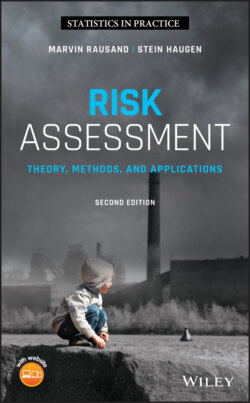Читать книгу Risk Assessment - Marvin Rausand - Страница 251
5.3.1 The ALARP Principle
ОглавлениеThe origin of the ALARP principle can be found in a court case from the UK (Court of Appeal 1949). There had been a fatal accident in a coal mine due to collapse of the roof of one of the tunnels, and the bereaved sued the National Coal Board for compensation. One of the judges in the Court of Appeal stated:
“Reasonably practicable” is a narrower term than “physically possible” and seems to me to imply that a computation must be made by the owner, in which the quantum of risk is placed on one scale and the sacrifice involved in the measures necessary for averting the risk (whether in money, time or trouble) is placed in the other; and that if it be shown that there is a gross disproportion between them – the risk being insignificant in relation to the sacrifice – the defendants discharge the onus on them.
If we interpret this, it essentially says that we need to compare the risk with the cost of reducing risk. If the cost is too high compared to the benefit we achieve, it is not required to reduce risk. This is at the very core of the ALARP principle.
ALARP
1 It provides a framework for evaluating risk (i.e. deciding on need for reducing risk). This requires explicit description and analysis of risk tolerability.
2 It involves a method of determining if the cost of a risk reduction measure is disproportionate to the benefits it will provide, and hence if the measure should be implemented.
When using the ALARP principle, the risk is divided into three levels, as shown in Figure 5.1 (HSE 2001):
1 An unacceptable region, where the risk is intolerable except in extraordinary circumstances, and risk reduction measures are mandatory.
2 A middle band, or ALARP region, where risk reduction measures are desirable but may not be implemented if their cost is grossly disproportionate to the benefit gained.
3 A broadly acceptable region, where no further risk reduction measures are needed. In this region, further risk reduction is uneconomical and resources could be spent better elsewhere to reduce the total risk.
We thus have to state two risk limits: an upper limit (i.e. between the unacceptable region and the ALARP region) over which the risk cannot be justified on any grounds, and a lower limit (i.e. between the ALARP region and the broadly acceptable region) under which the risk is considered generally acceptable.
If we look back at the three “pure” principles of risk acceptance, ALARP incorporates all three of these:
The equity principle is incorporated through the upper limit above which risk is unacceptable.
The utility principle is incorporated in the ALARP region, where risk is accepted if the cost of reducing risk is too high.
The technology principle is in practical use incorporated in the ALARP region because there is an expectation that “good practice” is followed when decisions are made regarding what measures to implement and not.
The ALARP principle was introduced in the framework on tolerability of risk (TOR) from UK nuclear stations (HSE 1992), and has subsequently been adapted for general applications in HSE (2001).
Figure 5.1 The ALARP principle.
The ALARP principle is relevant primarily for risk to humans. The vertical axis in Figure 5.1 (not shown) is thus a measure of individual risk, such as AIR. The UK HSE has defined the upper and lower limits for AIR in Table 5.1 .
Table 5.1 ALARP limits in the United Kingdom.
| Limit | Probability per year | For whom | |
| Upper | 1 in 1000 | The workforce | |
| 1 in 10 000 | The public (for existing industrial plants) | ||
| 1 in 100 000 | The public (for new industrial plants) | ||
| Lower | 1 in 1 000 000 | The public |
The risk is usually in the ALARP region, which is the region where the risk must be reduced to an ALARP level. The principle as such does not define what is “reasonably practicable.” Additional guidance is therefore required. An important first principle in ALARP is that risk reduction measures should be implemented, unless there are good arguments for not doing so. This means that if no evidence is available to show that a risk reduction measure is not practicable, it should be implemented. Some other aspects that are important are the following:
1 Good practice should be adhered to when deciding on what risk reduction measures to implement. The argument that it is not practicable (due to cost or other reasons) to implement a measure cannot be used if it is common practice to do it. Good practice can be found in standards, industry guidelines, regulations, and other types of documents.
2 Systematic identification of possible risk reduction measures should be undertaken. This needs to be based on a good understanding of the accident scenarios and how they can be prevented or mitigated.
3 The severity of the hazardous event in question. The more serious the event is, the more is expected to be done to reduce risk.
4 The state of knowledge about the hazardous event, and the availability and suitability of ways of preventing or mitigating its effects. If it is practically difficult to implement measures to reduce risk, this can be taken into account.
5 The cost of preventing the hazardous events or mitigating its effects.
In practical application of the ALARP principle, there tends to be focus on the final item in this list and how cost–benefit analysis supports decisions about whether to reduce risk or not. The other points clearly show that many other aspects need to be considered and that cost–benefit assessment by no means is the only input into the decisions.
